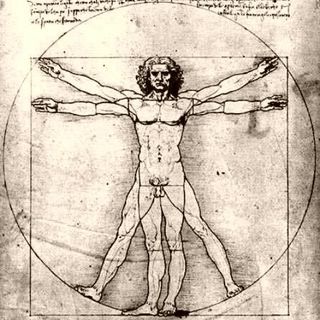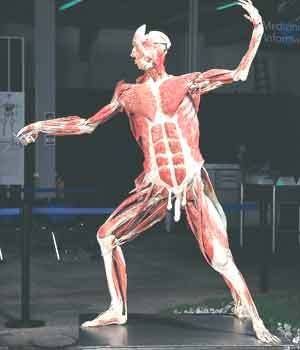Eduardo Galeano’s Memory of Fire is a book that deals very much with the importance of history. It was one of the only books that dealt with my “WASP” history at all, though not in a very good light. I got to read about how my “history” was shaped by the slaughter of other people’s cultures. Memory of Fire is the perfect example of how history shapes a narrative. In Galeano’s work he uses history to form his linear narrative. Before the narrative even starts Galeano writes a description of exactly how he uses history to shape the narrative of his book (and even the ones to follow) in a section titled “This Book.”
This book is the first of a trilogy. It is divided into to parts. In one indigenous creation myths raise the curtain on pre-Columbian America. In the other, the history of America unfolds from the end of the fifteenth century to the year 1700. The second volume… will cover the eighteenth and nineteenth centuries. The third volume will reach up to our times. (Galeano, xvi)
In this way Galeano fashions his novel in an historical chronological order starting from stories about the creation of the world that were, for specific cultures, taken to be historical accounts and, eventually, ending his historical accounts in present day America.
Jhumpa Lahiri’s Indian culture-based novel The Namesake, like Galeano’s novel, is arranged in sections according to date. Chapter one is seemingly entitled 1968 and it ends in Chapter twelve which shows that the book has made the journey to 2000. It becomes obvious that Lahiri thought it important to show the time in which this novel takes place. But the narrative is not linear such as Galeano’s. The reader gets glimpses into the past of the characters before the year it starts and even into the future. In the last chapter Lahiri switches from narrating present tense to future tense. “He wonders if he will be married again one day, if he will ever have a child to name. A month from now, he will begin a new job at a smaller architectural practice, producing his own designs” (Lahiri, 289). Lahiri does not stay in the lines of the linear narrative to tell the histories of the characters. She shifts from past to present to future. This is because it takes all of these elements for the characters to come to terms with their cultural histories, new and old.
Toni Morrison, in her novel that deals with African-American culture, Song of Solomon, uses history to shape her narrative as well. In Morrison’s novel the idea of forgetting history or the absence of knowledge in regards to a familial or cultural history shape the events of the novel. Morrison takes the reader along on the same journey as the character, Milk Man, to find the truth of his family’s history. As Milk Man learns things, so does the reader. History does not reveal itself to the reader until it is revealed to a specific character. In this way history, much like in Momaday’s book, is not told in a direct linear fashion. History affects the narrative because the discovery or the recovery of forgotten or hidden stories or histories, pull the novel along. Additions the Dead’s family history and Milk Man’s cultural history serves to drive the narrative further. The best example of this is how Milk Man, from a small child, had a habit of always looking behind him. “It was becoming a habit—this concentration on things behind him. Almost as though there were no future to be had” (35). But Milk Man’s future actually exists in his past.
It wasn’t true what he’d said… that it wasn’t important to find his people. Ever since Danville, his interest in his own people, not just the ones he men, had been growing… Who were they, and what were they like? …why did she want to keep that awful name? To wipe out the past? Slavery? His slave past? And why didn’t his own father, and Pilate, know any of their own relatives? (293)
He has to find out his history, familial, personal and cultural before he can become a man and deal with his future. The book mimics this idea by constantly moving forward aided by details of the past.
N. Scott Momaday’s autobiography The Names: A Memoir is also a story that is concerned with coming to terms with ones past cultural histories. The Names is created from his personal history as a Native American, and not (as in Galeano’s book) concerned with retelling the history in a linear fashion. This is because Momaday is not concerned with the actual order of how things happened historically as much as he is concerned with how he remembers, or even imagines, it. “In general my narrative is an autobiographical account. Specifically it is an act of the imagination… This is one way to tell a story. In this instance it is my way, and it is the way of my people” (Momaday, i). Momaday is explaining that, to re-tell a history in a non-linear fashion as he does in his novel, is to remain true to and to fully represent his culture. And as far as history is concerned in his narrative, Momaday believes that his history is shaped fully by him and not, as Galeano is concerned with, by the specific placement in time an event actually occurred. Therefore, there is no true linear version of history neither in his mind nor in his book.
I invented history… The past and the future were simply the large contingencies of a given moment; they bore upon the present and gave it shape. One does not pass through time, but time enters upon him in his place… Notions of the past and future are essentially notions of the present. In the same ay an idea of one’s ancestry and posterity is really an idea of the self. (Momaday, 97)
Since Momaday feels that history doesn’t just exist in dates, rather in memories and are as much in the present as it is in the past, so then does his narrative. Momaday is the perfect example of cultural histories shaping a narrative. His Indian culture doesn’t follow traditional, linear patterned narratives. Rather they allow their stories lines to flow and intermingle the present with the past.
As a person with a feeling of disconnect from a particular culture, I find myself being drawn into the various re-tellings of cultural histories from various novels. In Memory of Fire Galeano uses actual events to form his linear re-telling of history from a particular culture’s perspective. In the The Namesake Lahiri follows a linear narrative in her chapters, but within those chapters the narrative slips from present to past to highlight the journey her characters take to find their cultural identities. The narrative of Song of Solomon is guided by the discovery of cultural/personal history. And then, of course, N. Scott Momoday’s autobiography The Names follows his cultural idea of history by not retelling his story in any sort of linear fashion. Culture has a profound effect on the telling of a person’s history. As I feel stripped of culture I also feel stripped of history. But, if Momaday is correct and we, as individuals, can make our own history I am not without hope of one day having my own history to discover and then, hopefully one day, to narrate for future generations.

 fig. 1
fig. 1 fig. 2
fig. 2